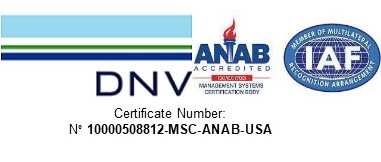USACE EMERGENCY RESPONSE SALT WATER SILL CONSTRUCTION:
Weeks Marine continues dredging with their cutterhead dredge J.S. CHATRY to build the salt water barrier, the process and arrangements made have promoted dredge efficiency, navigational safety, and the communication with the Contact Pilots is working for industry and pilots. Most importantly the sill is being constructed with limited impacts from the transit restrictions or vessel traffic. Weeks expects to have the sill completed to the target elevation of – 55 feet (with 2 feet of variance – allowed by the USACE) by Wednesday, October 19, 2022.
The estimates remain that over the next few days the sill should be close to completion across the Mississippi River at Mile 63.8 Above Head of Passes (AHP) to the first elevation at -55 feet (with 2 feet of variance). Once that target elevation is acquired and confirmed via surveys, the USACE will monitor the progress of the salt water wedge and then make a decision on the need to build the sill higher or not.
AT THAT POINT, THE DECISION TO BUILD ABOVE -55 FEET WILL DETERMINE A LOT ABOUT THE POTENTIAL FOR PROMPT ADJUSTMENTS TO MAXIMUM DRAFT RECOMMENDATIONS.
The maximum draft recommendation for the Mississippi River Ship Channel remains 50 feet (Freshwater) to the Huey P. Long Bridge – although a decision to build the sill higher than -52 feet is expected to generate draft restrictions.
Weeks Marine offered the following update this morning:
“On 10.16.22 the Dredge JS Chatry completed a first pass in Cut 2 of the Saltwater Sill borrow area from STA 42+25-44+50 before stepping back to begin a 2nd Pass in Cut 1 from 23+15-28+60. Drag Barge was successfully set up, tested, and began operating on this day removing any material above template limits.
Spill Barge operations are beginning to bring Sill elevations to grade, slowdowns in production are expected today as available volume in the template begins to decrease.”
The deeper holes are the locations where the salt water wedge will fill first as it migrates upriver. The river stages have are forecasted to continue a slow steady fall, with Baton Rouge forecast to reach 2.2 feet and New Orleans forecast to reach 2.0 feet on November 14, 2022. As the river stages recede further the likelihood is that the salt water wedge will begin to advance upriver.
The Marine Safety Information Bulletin (MSIB) as developed by the U.S. Coast Guard and the Navigation Bulletin released by the U.S. Army Corps of Engineer are both attached.
The channel restrictions detailed in the MSIB are reproduced below:
All vessels are limited to one wav traffic from MM 63.65 to 63.91 AHP confined to a channel soo· wide. The channel follows the Left Descending Bank (LDB) and is marked on its West side by four white buoys with fixed white all-around lights.
- All vessels transiting this zone shall check-in with. and take direction from the Contact Pilot onboard the T/V CAPT SAM 30 minutes prior to arrival on Channel 67.
- All vessels shall transit at their slowest safe speed between MM 63.5 to 65 AHP.
- All vessels anchoring in Alliance Anchorage shall maintain a minimum 2,500’ separation from the J.S. CHATRY. Additionally. the northern most 600′ of the anchorage is closed. Vessels anchored may be required to vacate at the discretion of the Contact Pilot.
- The Contact Pilot is the Coast Guard’s Designated Representative.
- These measures will remain in effect until rescinded/adjusted at a future date.
The one-way traffic for shallow- and deep-draft traffic will be controlled by the Contact Pilot on the CAPT SAM 24-hours until the construction of the salt water sill is completed (MSIB Rescinded).
The target elevation for the first phase of the sill is a -55 feet, the USACE may have to reduce the water level even further but that will be determined by the impact on salinity of the sill at the first height (- 55 feet), note that additional conditions and the potential to construct the sill higher than – 55 feet could indeed lead to the rapid establishment of maximum draft restrictions.
The USACE tracks the location of the salt water wedge, although the salinity measurements are complicated and mandated salinity measurements are to be taken at the surface of the Mississippi River. The salt water wedge runs along the bottom of the channel and extends approximately 15 miles upriver above the location where the salt water contacts the water surface. The constructed barrier will eventually stop the encroachment of salt water but the elevation and measurements will be key as the river stages are projected to start a slow fall. The USACE indicated again that the final elevation for the sill may indeed be higher than – 55 feet but that the sill has to be completed across the river before measurements and predictions for salt water encroachment can be accounted for. The tentative concern remains that the sill being constructed to – 52 feet or less would most result in draft restrictions for deep-draft traffic as this area of the Ship Channel is presently at a maximum draft recommendation of 50 feet. The worst case scenario for navigation involves building the sill to -45 feet that would most likely result in draft restrictions at 43 feet.
The graph below is reproduced from the National Oceanic and Atmospheric Administration’s (NOAA) National Weather Service website and represents an experimental product to account for the complexity of accurately predicting long-range precipitation. This forecast projects stage levels based on expected precipitation for 2 days (top) and 16 days (bottom) and was developed within the North American Ensemble Forecast System (NAEFS) computer model and highlights Quantitative Precipitation Forecasts (QPF). Along with the forecasts, a shaded area is also provided to indicate uncertainty for the forecast each day in the future. These plots are experimental and not an official forecast product.
With You,
Sean
Sean M. Duffy, Sr.
Executive Director
Standing By Channel: (504) 338-3165
Big River Coalition




